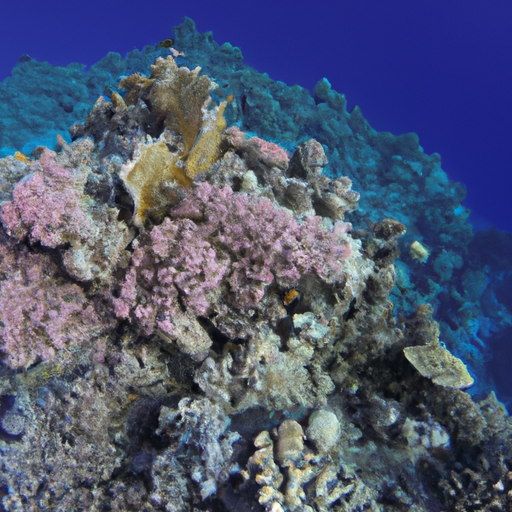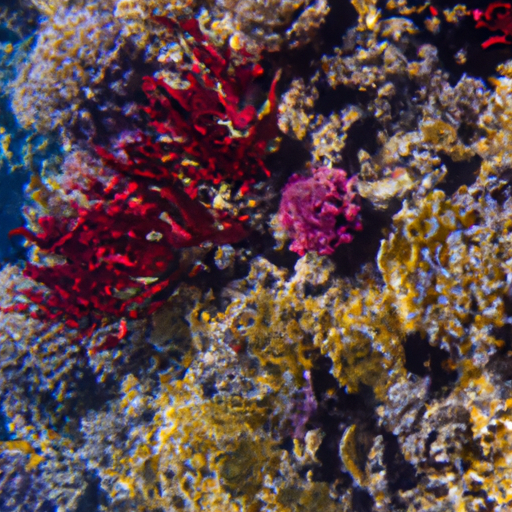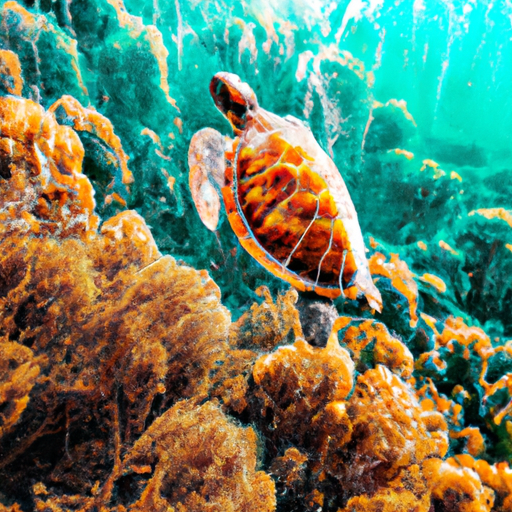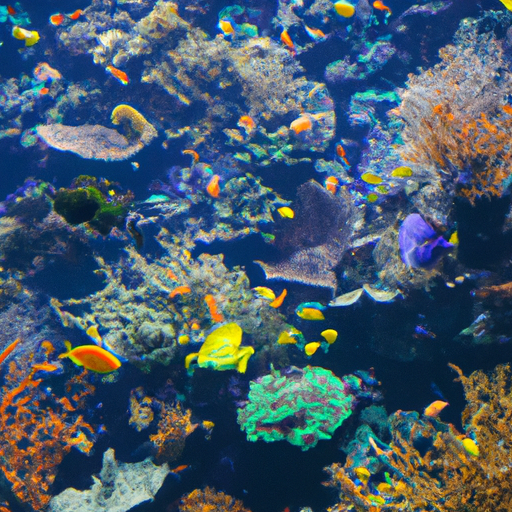
The Rising Threat: How Climate Change is Affecting Marine Life
Climate change is having a profound impact on marine life, posing significant threats to the delicate ecosystems that exist beneath the surface of our oceans. From rising sea temperatures to ocean acidification, these changes are disrupting the balance of marine ecosystems and leading to a multitude of challenges for the organisms that rely on them for survival.
One of the primary threats that climate change poses to marine life is the increase in sea temperatures. As global temperatures rise, so do the temperatures of our oceans. This warming has a cascading effect on marine organisms, including coral reefs, fish, and other marine species. Many of these organisms have specific temperature requirements for survival, and even a slight increase can disrupt their behavior, reproductive patterns, and overall health. The loss of these keystone species has a detrimental impact on the entire food chain, leading to a decline in biodiversity and ecosystem stability.
Additionally, climate change is causing ocean acidification due to the increased absorption of carbon dioxide by seawater. This acidification is particularly harmful to marine life with calcium carbonate shells, such as shellfish, corals, and some planktonic species. Acidic waters make it difficult for these organisms to build and maintain their protective shells, leaving them vulnerable to predation and hindering their ability to reproduce. This not only threatens the survival of these species but also has far-reaching implications for the entire marine food web.
Despite the grim outlook, there are potential solutions to mitigate the impact of climate change on marine life. One key approach is the reduction of greenhouse gas emissions, particularly carbon dioxide. By transitioning to cleaner and more sustainable energy sources, we can help stabilize global temperatures and slow down the rate of ocean warming and acidification. Additionally, the establishment of marine protected areas can provide a refuge for species to adapt and thrive in a changing environment. These designated areas can help preserve critical habitats and ensure the long-term survival of vulnerable marine species.
Furthermore, fostering global cooperation and raising awareness about the importance of marine conservation is crucial. Collaboration between governments, scientific institutions, and local communities can lead to the implementation of effective policies and practices that promote the sustainable use of marine resources and reduce the human impact on marine ecosystems.
Climate change continues to pose a growing threat to marine life. It is imperative that we take immediate action to address these challenges and work towards a more sustainable future for our oceans. By understanding the threats and implementing solutions, we can help protect and preserve the incredible biodiversity that exists within our marine ecosystems.
Coral Bleaching: A Dire Consequence of Climate Change on Coral Reefs
The impact of climate change on marine life, especially on coral reefs, is a growing concern. Rising global temperatures, combined with other factors such as ocean acidification and pollution, pose significant threats to the health and survival of these delicate ecosystems. One of the most alarming consequences of climate change on coral reefs is coral bleaching.
Coral bleaching occurs when the symbiotic relationship between coral polyps and the microscopic algae called zooxanthellae breaks down. This relationship is crucial for the survival of coral reefs, as the algae provide food and give coral their vibrant colors. However, under stressful conditions such as increased water temperatures, corals expel the algae, leading to the bleaching phenomenon.
Climate change intensifies coral bleaching events, as warmer water temperatures put additional stress on corals and disrupt the delicate balance between the coral and zooxanthellae. As a result, coral reefs become pale and vulnerable to disease, rendering them more susceptible to mortality.
The consequences of widespread coral bleaching are devastating for both marine life and human communities. Coral reefs support a biodiverse ecosystem, providing habitat and shelter for numerous fish species, marine mammals, and other organisms. They are a crucial source of food and income for coastal communities, particularly those dependent on fishing and tourism industries.
To address the threats posed by climate change on coral reefs and marine life, various solutions have been proposed. Mitigating climate change itself is paramount, and efforts to reduce greenhouse gas emissions are crucial. The implementation of cleaner energy sources, such as renewable energy, can contribute to reducing carbon dioxide emissions and slowing down global warming.
Conservation and restoration initiatives are also essential in protecting and rehabilitating coral reefs. This includes establishing marine protected areas, promoting sustainable fishing practices, and reducing pollution from land-based sources, such as agriculture and urban runoff.
Furthermore, raising awareness about the importance of coral reefs and their vulnerability to climate change is crucial. Education and outreach programs can help instigate action at both the local and global levels, encouraging individuals and communities to make sustainable choices and support conservation efforts.
In conclusion, the impact of climate change on marine life, particularly coral reefs, is a pressing issue. Coral bleaching, as a consequence of rising temperatures, poses a significant threat to the health and survival of these fragile ecosystems. However, through a combination of climate change mitigation, conservation efforts, and public awareness, it is possible to alleviate the threats and protect these invaluable marine ecosystems for future generations.
Changing Ocean Currents: Disrupting Food Chains and Ecosystems
The impacts of climate change on marine life are becoming increasingly evident as changing ocean currents disrupt food chains and ecosystems. Rising temperatures and changes in ocean circulation patterns are leading to a range of threats to marine species and habitats. Understanding these threats is crucial in order to develop effective solutions and mitigate the negative impacts of climate change.
One of the major threats posed by changing ocean currents is the disruption of food chains. Many marine organisms rely on specific temperature ranges and current patterns for their survival and reproduction. As these conditions shift, the availability and distribution of prey species can change, leading to imbalances in food availability for predators. This can have cascading effects throughout the food web, impacting multiple species and potentially leading to population declines or even extinctions.
In addition to disruptions in the food chain, changing ocean currents also affect marine ecosystems in other ways. Corals, for example, are highly sensitive to temperature changes and alterations in water flow. Rising sea temperatures can cause coral bleaching, a phenomenon where corals expel the symbiotic algae living within their tissues, leading to their death. This not only impacts the coral itself but also the multitude of species that rely on coral reefs for food, shelter, and reproductive habitats.
Furthermore, changes in ocean currents can also result in the introduction of non-native species to new areas. As waters warm and currents shift, species from warmer regions may move into previously cooler regions, potentially outcompeting or preying upon native species. This can disrupt the balance of ecosystems and threaten the survival of indigenous species.
Addressing these threats and finding solutions to ensure the resilience of marine life in the face of climate change is of utmost importance. One key approach is the reduction of greenhouse gas emissions to mitigate further warming and ocean acidification. This requires global cooperation and efforts to transition to clean and renewable sources of energy. Additionally, the establishment of marine protected areas can help safeguard vulnerable ecosystems and provide refuge for species affected by changing ocean currents.
Research and monitoring programs are also crucial for understanding and predicting the impacts of climate change on marine life. By collecting data on species distributions, reproductive success, and population dynamics, scientists can identify vulnerable areas and species, enabling targeted conservation efforts. Improved understanding of the complex interactions between species and their environment can also aid in the development of adaptive management strategies to conserve biodiversity and ensure the long-term survival of marine ecosystems.
In conclusion, changing ocean currents due to climate change pose significant threats to marine life. Disruptions in food chains, habitat loss, and the introduction of invasive species are just some of the challenges facing marine ecosystems. However, through international cooperation, reduction of emissions, establishment of marine protected areas, and scientific research, we can work towards mitigating these threats and preserving the invaluable biodiversity of our oceans.
Adaptation and Mitigation: Promising Solutions to Combat Climate Change’s Impact on Marine Life
Climate change is having a profound impact on marine life around the world. Rising sea temperatures, increased ocean acidification, and changing weather patterns are just a few of the threats that marine organisms are facing. These changes not only disrupt ecosystems but also endanger the survival of many species.
One of the most significant impacts of climate change on marine life is the loss of habitat. Coral reefs, which are home to a wide variety of marine species, are particularly vulnerable to rising sea temperatures. As the water gets warmer, corals experience bleaching, a process of expelling the symbiotic algae that provide them with nutrients and color. Without these algae, the corals turn white and become more susceptible to disease. As a result, entire coral reef ecosystems are dying off at an alarming rate.
Another threat to marine life brought on by climate change is ocean acidification. Increased carbon dioxide levels in the atmosphere not only contribute to global warming but also get absorbed by the ocean, leading to a more acidic environment. This acidification inhibits the growth and calcification of many organisms, including shellfish, corals, and plankton, which form the base of the marine food chain. As these organisms decline, the entire food web is destabilized, impacting fish populations and the livelihoods of many coastal communities.
Fortunately, there are promising solutions to combat climate change’s impact on marine life. Adaptation and mitigation strategies can help protect vulnerable species and ecosystems. One such adaptation strategy is the establishment of marine protected areas (MPAs) that serve as sanctuaries for marine life. MPAs limit human activities such as fishing and pollution, allowing ecosystems to recover and providing a safe haven for species to thrive.
Mitigation strategies, on the other hand, aim to reduce the causes of climate change. One of the primary ways to mitigate climate change is to reduce greenhouse gas emissions. This can be achieved through transitioning to renewable energy sources, improving energy efficiency, and adopting sustainable practices in various industries. By reducing the release of carbon dioxide and other greenhouse gases, we can slow down the rate of global warming and give marine organisms a better chance of survival.
In conclusion, climate change poses significant threats to marine life, including habitat loss, ocean acidification, and disruptions to the food web. However, through adaptation and mitigation strategies, we can mitigate these impacts and protect the future of our oceans. By establishing marine protected areas and reducing greenhouse gas emissions, we can ensure the resilience and biodiversity of marine ecosystems for generations to come.



